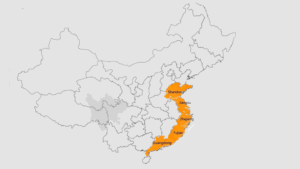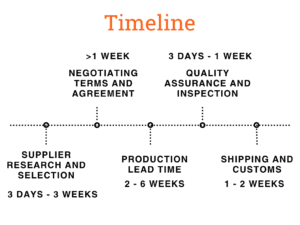Sourcing products from China offers a world of opportunities for businesses in Singapore. With its vast manufacturing capabilities, cost-effective production processes, and diverse supplier options, China is one of the most popular choices for procurement and production. Whether you’re looking for high-quality raw materials, electronics, fashion, or consumer goods, China has suppliers to meet your business needs.
However, sourcing suppliers in China isn’t as straightforward as simply picking up the phone or making an online order. It requires careful planning, understanding of the local manufacturing ecosystem, and a keen eye for quality assurance. In this guide, we’ll walk you through the process of sourcing suppliers, what to look out for, the best industrial zones, timelines, potential challenges, and how we can help you navigate the intricacies of sourcing from China while ensuring the quality of your products.
Industrial Zones in China: Where to Source
China is home to many industrial zones, each specializing in particular types of manufacturing. Understanding the location of these zones is essential when deciding where to source your products.

-
Guangdong Province: A major hub for electronics, mobile phones, and high-tech manufacturing, with a vast network of suppliers ideal for tech startups.
-
Zhejiang Province: Known for textiles, clothing, shoes, and home goods production, as well as hardware, machinery, and auto parts manufacturing.
-
Jiangsu Province: Specializes in chemicals, machinery, electronics, and textiles, offering high-quality industrial and consumer products.
-
Shandong Province: An industrial powerhouse producing electronics, machinery, chemicals, and food products, especially renowned for machinery and equipment manufacturing.
-
Fujian Province: Key for sourcing textiles, electronics, footwear, and toys, with large factories serving both domestic and international markets.
Industries in China
China’s manufacturing sector is diverse and robust, encompassing a wide range of industries that contribute to its global economic dominance.
Typical Timeline for Sourcing Products in China
Sourcing products from China can be a time-consuming process, so it’s crucial to have a clear understanding of the timelines involved.

How We Can Help with Quality Assurance in China
At Paul Hype Page, we have a dedicated team based in China to help businesses like yours navigate the complexities of sourcing from Chinese suppliers. Our team offers:
- Supplier Screening: We ensure that suppliers meet your specifications and have a proven track record.
- Regular Quality Inspections: We conduct factory visits and quality control checks throughout the production process to ensure that the products meet your standards.
- Logistics Support: Our team helps manage shipping and customs, ensuring that your goods are delivered on time and without hassle.
Expert Consultation: We provide ongoing advice on supplier relationships, regulatory compliance, and risk management.
By working with us, you can rest assured that your sourcing process is smooth, your products meet the highest standards, and your business is set up for success. Our goal is to save you time, minimize risk, and ensure you receive quality products that meet your exact requirements.
FAQs
Ensuring product quality when sourcing from China requires regular inspections at different stages of production. You can hire third-party quality assurance services or work with sourcing agents who perform on-site inspections. Setting clear product specifications and building quality checks into the production process will also help maintain high standards.
The timeline for sourcing products from China can vary depending on the supplier, production lead times, and shipping logistics. Typically, it can take anywhere from 4 to 12 weeks from the time you place an order to when you receive your goods, considering production, quality inspections, and shipping. It’s important to factor in time for customs clearance as well.
Sourcing from China comes with challenges such as quality control, communication barriers, shipping delays, and navigating China’s regulatory environment. To mitigate these risks, it’s essential to conduct thorough supplier vetting, inspect products regularly, and have a solid understanding of Chinese customs regulations. Partnering with local experts can also ease the process.
China has several manufacturing hubs, each specializing in different products. Guangdong (Shenzhen) is known for electronics, Zhejiang for textiles and fashion, Jiangsu for machinery and chemicals, and Shandong for industrial goods. Knowing which region specializes in your product type can help you source efficiently and cost-effectively.
Finding reliable suppliers in China requires research and due diligence. You should start by using reputable supplier directories such as Alibaba, Global Sources, or Made-in-China. Additionally, it’s important to vet suppliers through background checks, reviews, and direct communication. Partnering with a sourcing agent or working with a company that specializes in supplier vetting can also help ensure reliability.



